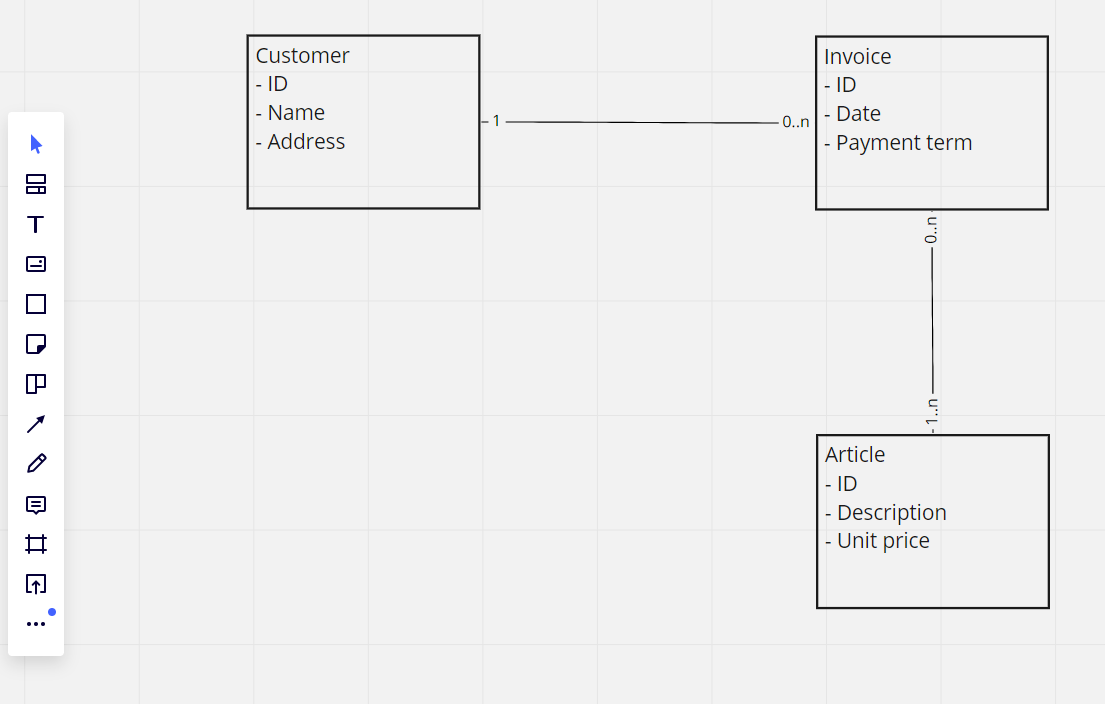

- #LUCIDCHART ENTITY RELATIONSHIP DIAGRAM SERIAL#
- #LUCIDCHART ENTITY RELATIONSHIP DIAGRAM SERIES#
- #LUCIDCHART ENTITY RELATIONSHIP DIAGRAM FREE#
Instead, products have specific color names like Chili Red, Hunter Green, and Blush, and, for consistency, only those should be used. However, you don’t want users entering just any color name. A color, for instance, black, is a string, so at first glance, varchar seems correct.

The attribute product_color in products got the varchar(15) data type.For example, numeric(8, 5) represents a number like 123.45678, which contains 8 digits, and 5 of those are fractional. This type receives two numbers inside brackets: the precision (total number of digits) and the scale (total number of fractional digits). Address latitude and longitude got the numeric data type.You may use it if you feel it is more appropriate for your use-case. In PostgreSQL, there is also a timestamp data type, which includes date and time. Attributes like order_date and delivery_date in orders, and payment_date in payments, got the date data type.Attributes like product_ cost and product_price in products, and payment_amount in payments, which deal with currency, got the money data type.The resulting users entity with keys, attributes, and data type follows: You may use this type and provide a maximum length inside brackets. PostgreSQL has a varchar data type that represents variable-length character strings.
#LUCIDCHART ENTITY RELATIONSHIP DIAGRAM SERIAL#
However, it also has a serialtype that the documentation describes as “autoincrementing four-byte integer.” The serial type is more appropriate for id than the integer type.Īll other attributes for users are strings. PostgreSQL has an integertype that you may use for id. In the case of users, you know that id is an autoincrementing integer. For this reason, when adding the data types for the attributes, you must use PostgreSQL data types.

Define the data typesĪs mentioned in the previous article, by the end of this series, you implement this database design in PostgreSQL. Notice that the third column (data types) remains unchanged. The PK label in the first column represents this key. Users only have one key so far: a primary key for attribute id.
#LUCIDCHART ENTITY RELATIONSHIP DIAGRAM FREE#
The LucidChart free account allows you to have up to three documents.
#LUCIDCHART ENTITY RELATIONSHIP DIAGRAM SERIES#
Once completed, LucidChart allows you to export the diagram as a series of Structured Query Language (SQL) statements, which you can use to implement the database in your favorite Relational Database Management System (RDBMS).īefore moving on, visit LucidChart and create a free account. Using a tool for our ERD simplifies the creation process and makes keeping the diagram up-to-date trivial. LucidChart is an online diagramming tool. In this post, you take the information about entities, attributes, and relationships from the previous article and create an Entity-Relationship diagram (ERD) using LucidChart.



 0 kommentar(er)
0 kommentar(er)
